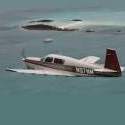Encore newbie questions
-
Members Online
- Guilly
- caractacuspdoom
- bluehighwayflyer
- 47U
- Ragsf15e
- Marc_B
- hphillips
- LANCECASPER
- MikeOH
- Yetti
- hubcap
- Schllc
- varlajo
- Aerodon
- Ron McBride
- N201MKTurbo
- redbaron1982
- Flyler
- ArtVandelay
- FlyingDude
- 201er
- Mark89114
- MB65E
- Jason Hardy
- Fly Boomer
- DXB
- Hank
- rbmaze
- Mufflerbearing
- joemoriss
- PT20J
- Utah20Gflyer
- dkkim73
- JetAlanY
- ElkoRandy20J
- AspiringOwner
- Brian2034
- gwav8or
- zehutiman
- MooneyMurph
- Mel
- rahill
- Endre Holen


Recommended Posts